In fact, I have been on many multi-month journeys and have written guides on planning a big trip in Southeast Asia taking many weeks or months.
However, not everyone has the opportunity to travel around Southeast Asia as, say, a digital nomad or long-term backpacker.
What if you just want to have the perfect taste on a 2-week holiday?
Well, sit back, pour yourself a drink, and get comfortable, as you prepare to immerse yourself in some of the top bite-size itineraries and trip ideas for Southeast Asia.
Are two weeks enough to see Southeast Asia?
Let’s get down to the bottom line here before I carry on any further – is two weeks enough time to see Southeast Asia?
The simple answer is, well, definitely not.
Just as you wouldn’t be able to ‘do’ Europe or North America in two weeks, I wouldn’t suggest attempting a go-everywhere tour of Southeast Asia. You’ll end up rushing and stretching yourself far too thin. Two weeks is barely enough time to explore one of the countries in the region, let alone all eleven of them! But hopefully that is obvious.
Of course, it is possible to plan an amazing 2-week trip that includes a selection of the region’s highlights. You can get an amazing 2-week sampler of Southeast Asia that will have you coming back for more.
Having traveled in every country in the region (often multiple times), I’ll share my best suggestions here for where to travel in Southeast Asia.
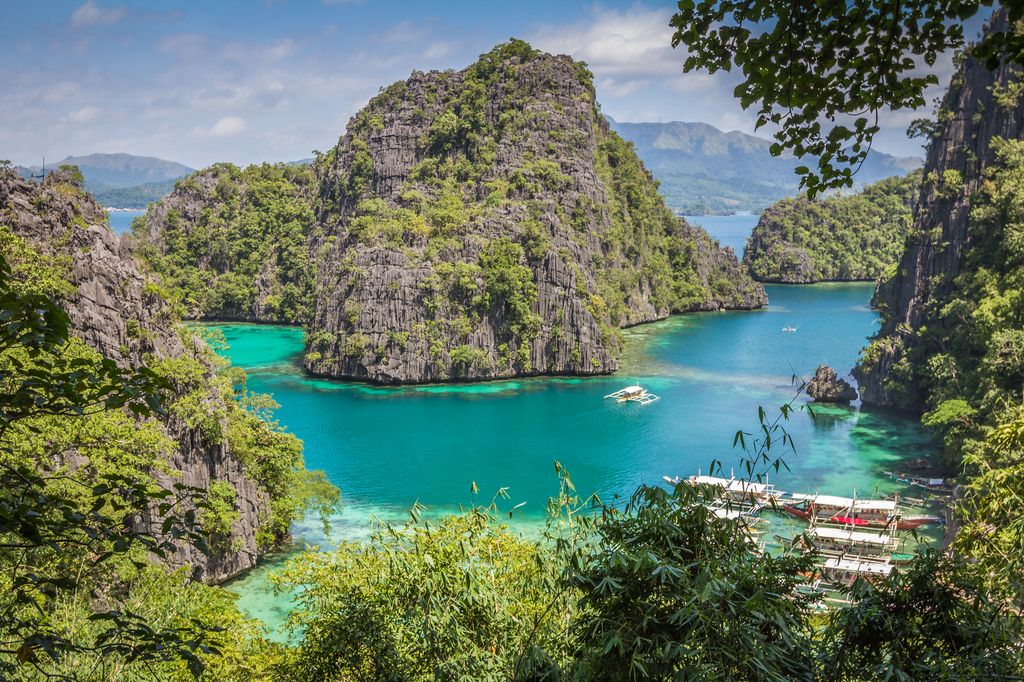
When is the best time to visit Southeast Asia?
Southeast Asia has two distinct seasons – the rainy (wet) season and the dry season. The tricky part is that it’s at different times in different places.
- November to March is generally a perfect time to visit the mainland countries such as Thailand, Laos, Cambodia, and Vietnam. It will be the dry season and temperatures are generally not too hot. (In northern Vietnam or Laos, it can actually get a bit chilly.) This time of year is also ideal for visiting most of the Philippines.
- April to October is the best time to visit Bali and other parts of Indonesia, and it’s also the dry season in east coast Malaysia during this time of year.
Travelling in the wet season or shoulder season can have its advantages, such as lusher and greener rice fields. However, with a two-week schedule, I generally recommend travelling in the dry season, so you don’t have to worry about adverse weather spoiling any plans.
Southeast Asia Itinerary Ideas
2 weeks in Thailand and Cambodia
First up on the Southeast Asia itineraries list is a two-week stint focusing mainly on Thailand, with a few days in Cambodia, too. It’s a classic itinerary that is perfect for first-timers.
The main airport in Bangkok, Thailand’s buzzing capital city, is Suvarnabhumi and it’s one of the best and busiest airport hubs in the region, so I would suggest flying into it and from there.
Bangkok is a real beast, with a buzzing street life full of food vendors, motorbikes, and people. The city is littered with Buddhist temples and other cultural landmarks and is a true reflection of Thai culture. The city comes alive at night (not that it isn’t during the day) and markets, restaurants, street food vendors, and bars really heave in the areas surrounding Khao San Road.
I’d recommend a couple of action-packed days in Bangkok. Some of the things I’d recommend doing include visiting The Grand Palace, Khao San Road, China Town, and the Damnoen Saduak Floating Market.
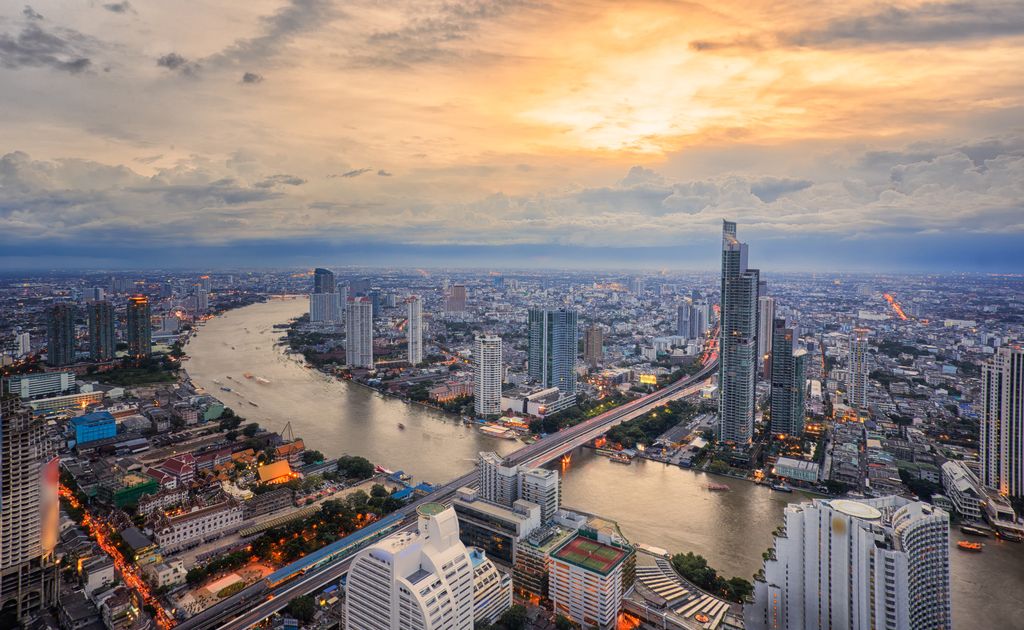
You also need to discover the delicious street food that is on offer in the city, and you can pick up delicious snacks on the go. Jay Fai restaurant is also another highly recommended restaurant stop (if you can get in) to try the famous crab omelet or the Tom Yum soup.
If you’re feeling particularly stressed (or if you have any excuse really), head for a traditional Thai massage at one of the many parlors that you can find along the streets. The perfect way to end off your time in Bangkok is to jump aboard one of the restaurant boats on the Chao Phraya River for an evening of entertainment and an all-you-can-eat seafood buffet.
After exploring Bangkok, I’d recommend getting the sleeper train up to the north of Thailand to the next stop on the itinerary – Chiang Mai. The sleeper train provides your transport and accommodation for the night and is a unique way to travel.
Chiang Mai is a lot more relaxed and toned down than Bangkok and is a great way to relax for a couple of days. Some of the must-dos include an all-day trip out to the elephant rescue sanctuary that includes some river rafting and a waterfall visit, watching a Muay Thai fight night, and visiting the local markets and night bazaar.
Then it’s off to the islands in the south of Thailand for a few days of relaxing on the beach, snorkeling, or scuba diving. You can easily take a flight from Chiang Mai to Koh Samui where the crystal blue waters and white sand beaches await.
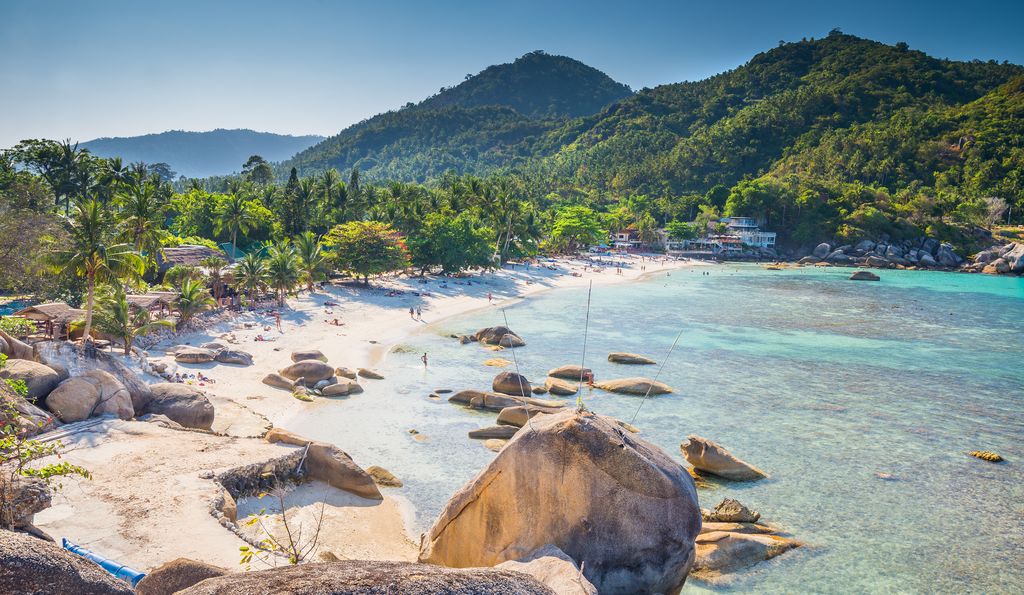
The highlights down in Koh Samui are centered on the ocean and the beaches, but there are also some cultural sights to see including the 12m Golden Buddha at the Wat Phra Yai Temple and the Fisherman’s Village.
Ready for another country? You can take a flight from Koh Samui to Cambodia, either to Phnom Penh or Siem Reap. I’d recommend flying into Siem Reap to visit Angkor Wat, the largest religious structure in the world.
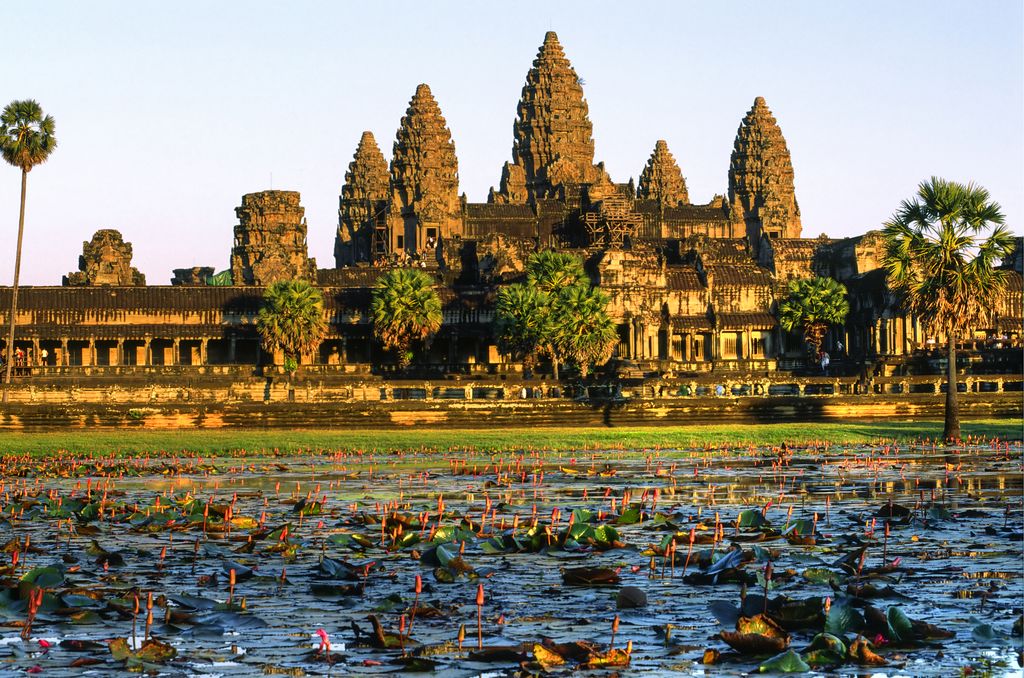
The UNESCO World Heritage Site is made up of the famous temples of Angkor Wat, Angkor Thom, and Bayon Temple and makes for an incredible couple of days of exploring.
You can then take a private bus down to the capital, Phnom Penh, which I would highly recommend visiting. You will be able to learn all about the history of the Cambodian Genocide and the atrocities that happened under the leadership of dictator, Pol Pot.
Visits to the S21 Prison and the “killing fields” of Choeung Ek are both sad, yet highly informative. From Phnom Penh, it’s easy to catch a flight out, either back to Bangkok and onwards home (hopefully not) or to your next destination.
The two-week Thailand itinerary is summarized below:
- Day 1 – 2: Bangkok
- Day 4 – 7: Chiang Mai
- Day 8 – 10: Koh Samui
- Day 11 – 13: Siem Riep
- Day 14 – 15: Phnom Penh
2 weeks island hopping in Palawan
Next up in the Southeast Asia itineraries is a two-week island-hopping adventure in the archipelagic province of Palawan in the Philippines. It consistently ranks as one of the best island destinations in the world – and it’s easy to see why!
Think incredible dive sites littered with shipwrecks, powdery white beaches, secret lagoons, and crystal-clear blue ocean waters. Sounds dreamy – and it is.
I highly recommend this part of Southeast Asia if you’d love to spend some time by the swaying palm trees. Palawan is less overly developed compared to the Thai coast, and the beaches are just about a hundred times better than those on Bali, even though the latter has so much better brand recognition.
Puerto Princesa is considered to be the gateway to Palawan and is often the starting point for the two-week itinerary exploring the islands. Here you can go on a magical firefly-watching cruise on the Iwahig River. You can rent a boat and paddle out into the darkness of the mangrove forests to see the dancing firefly show – a truly mesmerizing experience.
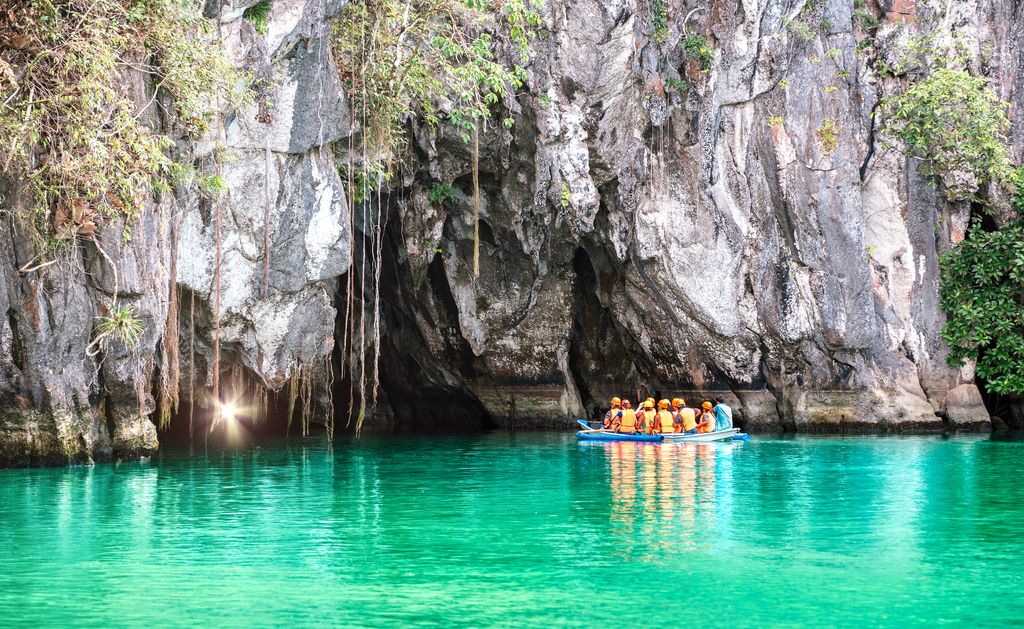
From the capital, you can head via land to the laid-back beach town of Sabang to visit the Puerto Princesa Underground River. It’s a recognized UNESCO World Heritage Site, snaking for 8km through the mountains and eventually opening up into the sea. It’s possible to explore around half of the river chambers as you enter narrow chambers and huge chasms filled with stalactites and stalagmites. There are also plenty of other things to keep you busy including paddling on the mangroves, bird watching, and hiking.
You can then go overland again to the quiet village of Port Barton for some relaxing beach time. One of the highlights, however, is to trek to the Pamuayan Falls through the jungle with a local guide.
It’s then onto one of the best parts of the itinerary – island hopping to the nearby islands and lagoons. There are several different tours that explore the 5 neighboring islands and include swimming and snorkeling and amazing, fresh seafood lunches. The Secret Beach is one of the highlights – nestled behind a small entrance in the limestone rocks.
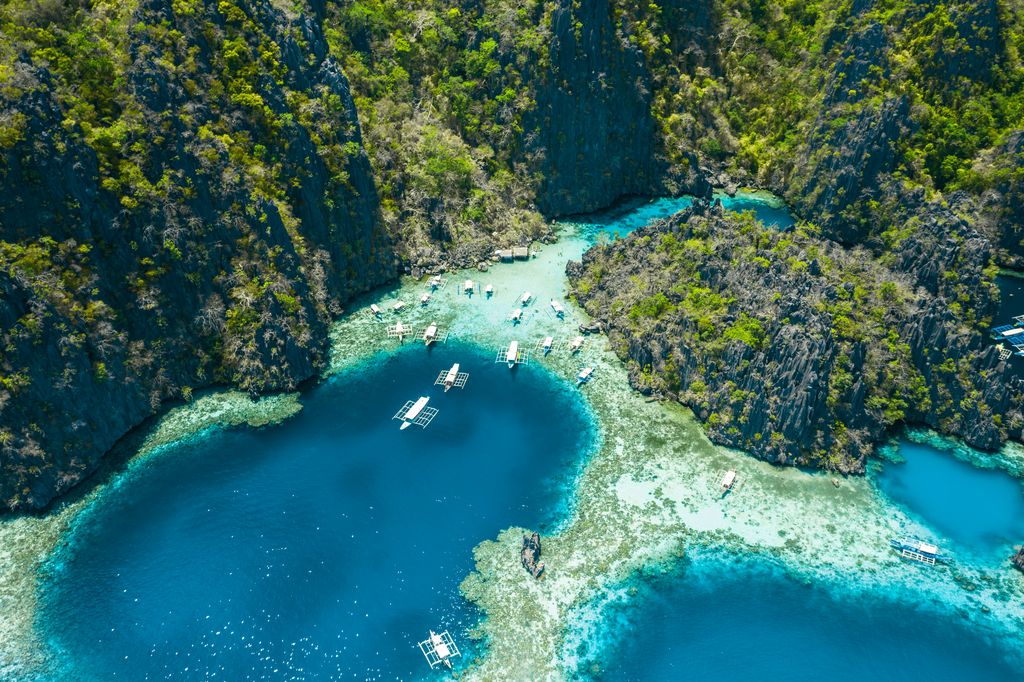
The final part of the itinerary is the island of Busuanga – a 5-hour ferry ride from El Nido. Busuanga has much of the same on offer as El Nido, only less touristy. There are the usual island-hopping tours on offer as well as hiking and some amazing wreck diving on offer. From there, it’s easy to reach Coron, from where you can fly back to Manila and onwards on your journey.
The two-week Palawan itinerary is summarized below:
- Day 1 – 2: Puerto Princesa
- Day 3 – 4: Sabang
- Day 5 – 7: Port Barton
- Day 8 – 10: El Nido
- Day 11 – 13: Busuanga
- Day 14: Manila
2 weeks in Vietnam
Next is Vietnam, one of the most popular Southeast Asian travel destinations. This itinerary is more focused on cultural sites and doesn’t include any beach stays, but the beaches aren’t the best in Vietnam anyway. (You can still spend a bit of time at the beaches of Hoi An, which are perfectly pleasant, just not postcard material.)
While it’s possible to explore Vietnam in two weeks, bear in mind that you will have to sacrifice a few stops, as 3 weeks in Vietnam is typically the recommended minimum for seeing both the north and south. But fear not, there is still plenty to do and see.
We’ll focus our two weeks on the top half of Vietnam. I’d recommend flying into Hanoi, Vietnam’s capital, exploring the northern territories, and then making your way south along the coast.
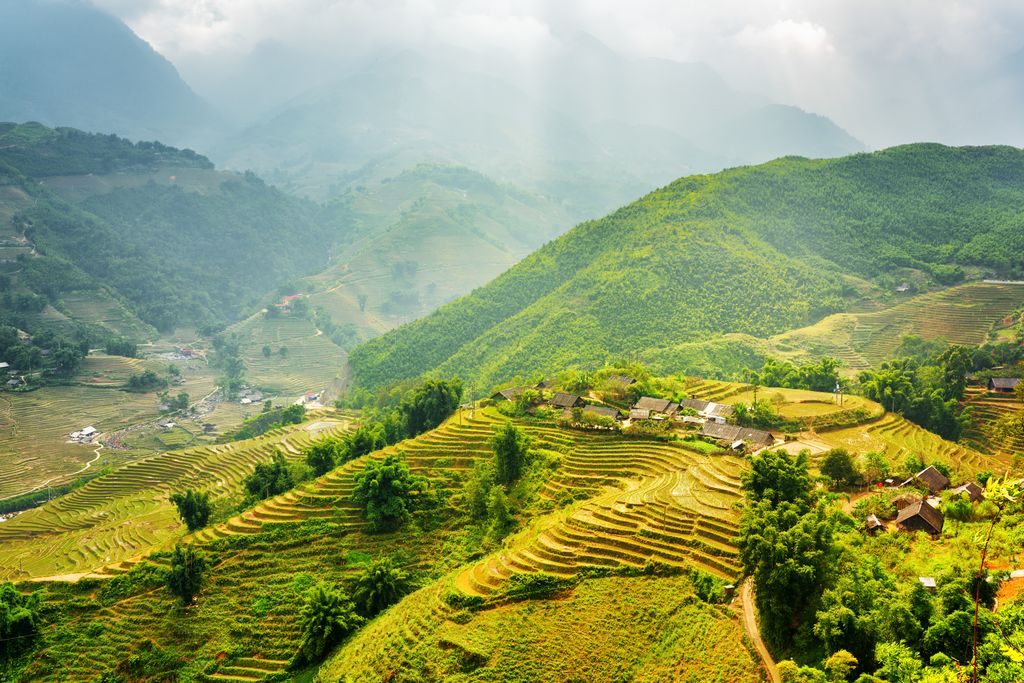
From Hanoi, you can begin your trip by booking an all-in 2-day tour up to Sapa. You can either take the bus or the overnight sleeper train to Lao Cai – both are great, and both will get you there. The train, however, saves you a night’s accommodation. Once there, your tour will likely take you trekking over the mountains with a local Hmong guide, before arriving at your accommodation for the night. You can explore the local rice paddies and depending on the season, get some epic photos. You’ll also get to experience the local Hmong culture, along with their cuisine and of course, happy water – a locally fermented rice wine.
After arriving back in Hanoi, I’d recommend a few days in the city, exploring the cultural sites and diving into the street food scene. Hoan Kiem, the Old Quarter, is a great starting point for walking around the lake, trying local dishes like pho and banh mi or even a ca phe trung (egg coffee). Other cultural sites worth exploring include the Temple of Literature and the Ho Chi Minh Mausoleum.
From Hanoi, I’d then recommend booking another all-in trip down to Halong Bay – another UNESCO World Heritage Site. This trip entails spending two days and one night aboard a boat, navigating the 1,960 limestone islands in Halong Bay. You’ll also get to see sites like Tip Top Island and Sung Sot Cave, do some kayaking, swim, and even try your hand at squid fishing.
Once back in Hanoi, spend another day before heading down to Hue by overnight sleeper bus. There are some great sites to explore in Hue, the former capital, such as the Imperial City, the abandoned water park, and royal mausoleums.
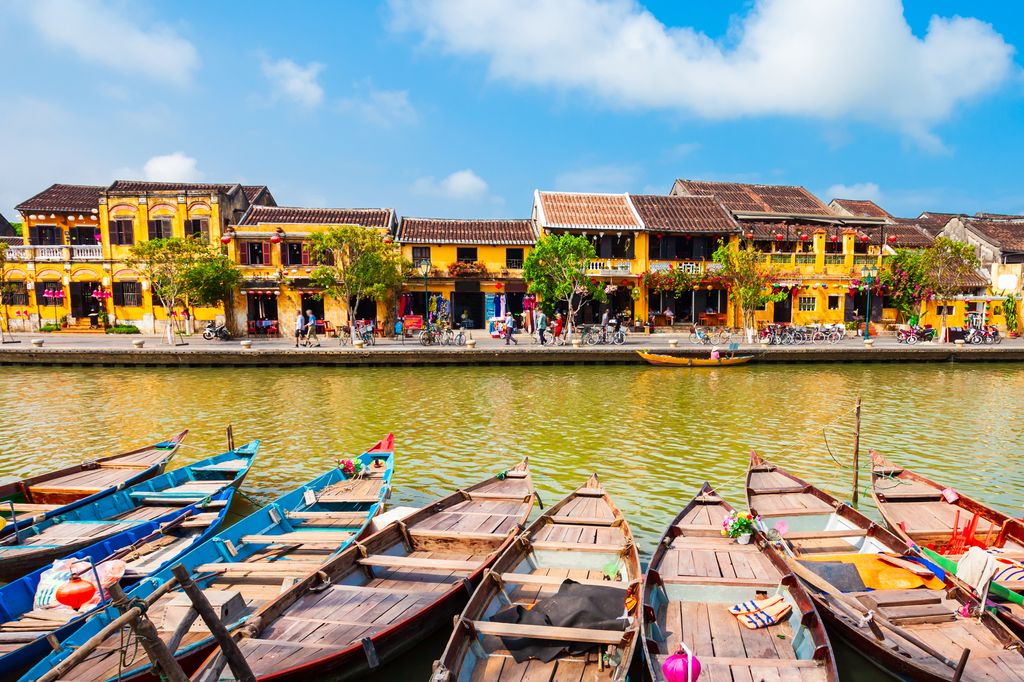
The historic town of Hoi An is the final stop on the two-week Vietnam itinerary. From the night markets and walks along the winding river to swims down at An Bang Beach, tailored suits, and the Marble Mountains, Hoi An has a lot to offer. Just know that being one of the most popular sites in Vietnam, its walking streets can get quite crowded.
After Hoi An, you can easily fly to Ho Chi Minh City from the nearby Danang Airport or simply take the overnight train.
The two-week Vietnam itinerary is summarized below:
- Day 1: Hanoi
- Day 2 – 4: Sapa
- Day 5 – 7: Hanoi
- Day 8 – 9: Halong Bay
- Day 10 – 11: Hue
- Day 12 – 14: Hoi An
2 weeks in Malaysia and Borneo
Malaysia gets talked about a bit less than the likes of Thailand or Bali. I considered it underrated, though it is a bit more of a well-organized country with fewer chaotic streets and markets and such, which has both its fans and detractors.
Backpackers are sometimes disappointed by the more highly taxed alcohol in Malaysia. Couples and families often love Malaysia for its combination of varied cuisine, architecture, and jungle adventures, while having a somewhat higher standard of living and comfort.
One of the coolest things about Malaysia is that it brings together many cultures and cuisines, including Malay, Indian, Chinese, and more. Foodies will have a field day!
This itinerary begins in the capital Kuala Lumpur, where I’d recommend staying for a couple of days. Don’t miss the Petronas Towers, two twin skyscrapers that have an observation deck in between.
The Petaling Street Market is also a great place to explore on the same day as the Petronas Towers. On your second day, the Ah Ma House bakery and Batu Caves are the order of the day.
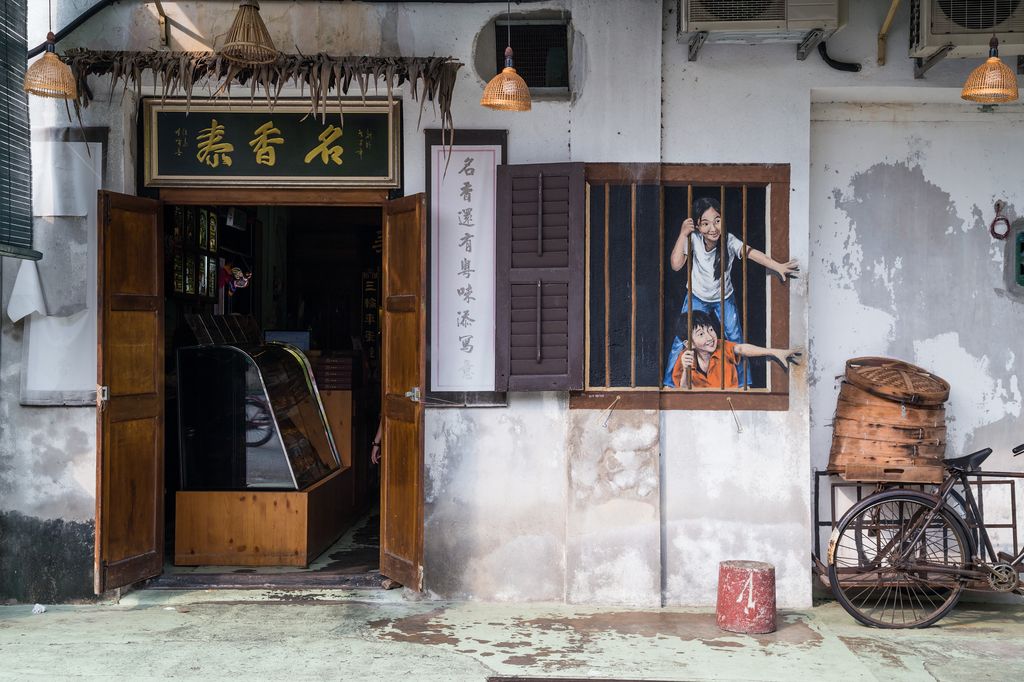
From Kuala Lumpur, you can make your way up to Penang via land to explore the city and surroundings. You can spend a few days in the city exploring the local hawker foods, the UNESCO World Heritage Site in Georgetown, and of course, head to the local beaches.
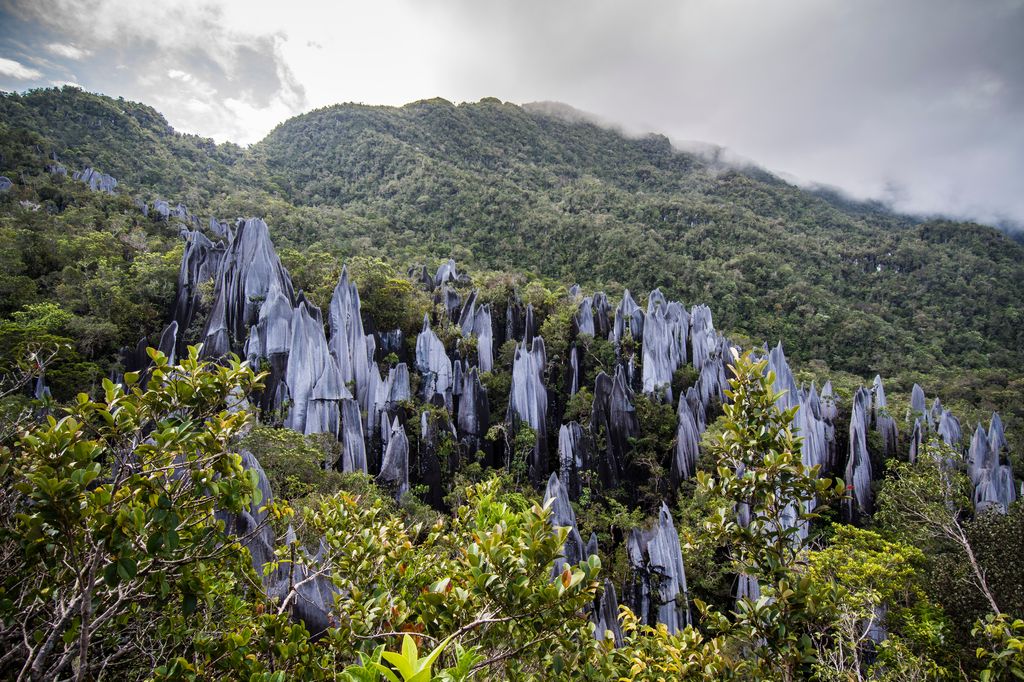
From Penang, you can easily take a flight over to the city of Kuching, the capital of Sarawak, for the next part of the adventure. There are some amazing sites to explore like hiking in the Bako National Park, coming face-to-face with orangutans at the Semenggoh Nature Reserve, exploring the local cuisine, and walking along the iconic Kuching Waterfront.
Next, take a flight up to Sandakan on the northeastern coast of Borneo for the final few days of the trip. Here, the attractions include the Kinabatangan River Cruise to see the Bornean wildlife, turtles laying eggs at Selingan Turtle Island, orangutan encounters at Sepilok Orangutan Rehabilitation Centre, and even some caving at Gomantong Cave.
Alternatively, you can focus your trip on just Sarawak (eastern Borneo) or Sabah (western Borneo) for a slower pace.
The two-week Malaysia and Borneo itinerary is summarized below:
- Day 1 – 2: Kuala Lumpur
- Day 3 – 6: Penang
- Day 7 – 10: Kuching
- Day 11 – 13: Sandakan
- Day 14: Kuala Lumpur
2 weeks in Indonesia
Finally, let’s focus on Bali in Indonesia.
While Bali honestly suffers from over-tourism in some parts, it remains one of the easiest introductions to Southeast Asia.
I suggest getting the best of (central) Bali while adding the neighboring island of Lombok for some unspoiled beaches.
You can begin by flying into Denpasar Airport. Head to a coastal location, such as trendy Canggu, or upscale Seminyak — but avoid rowdy Kuta if it’s not your thing.
Next, spend a few days in Ubud, located in the uplands of Bali. It’s a very different vibe to down in the south and it’s known as the center for dance and traditional crafts.
The scenery in Ubud is also incredibly tranquil and it’s surrounded by rice paddies and rainforests. Some of the highlights include walking through the rice paddies, waterfall hikes, and visiting the local monkey sanctuary.
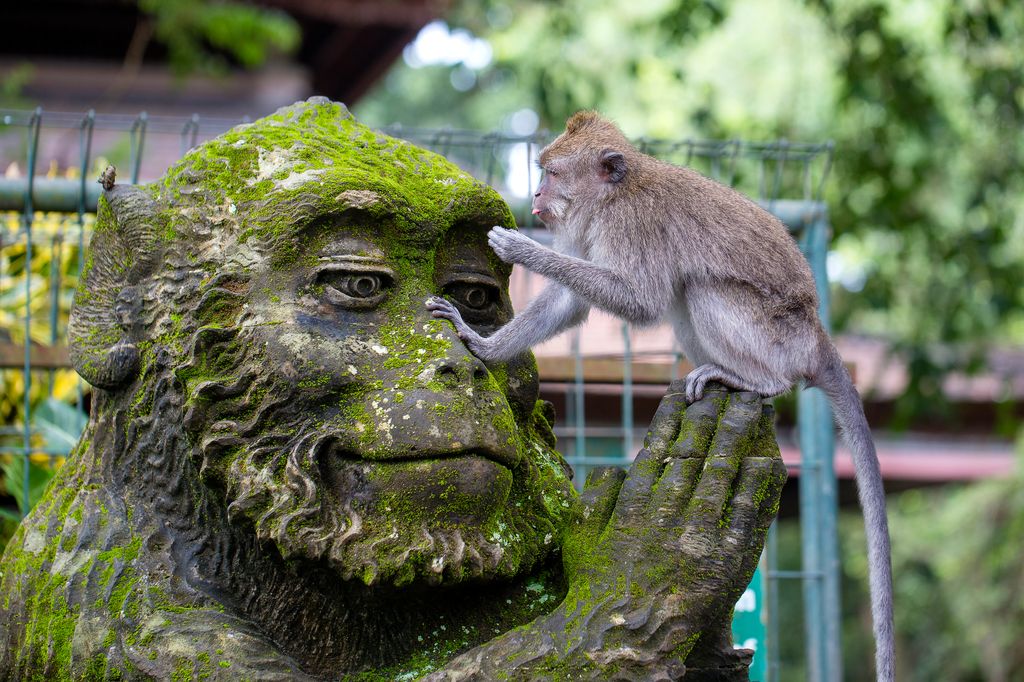
From Ubud, I’d recommend heading back down to the south for a day before catching a fast boat to the island of Lombok for the second part of the itinerary. The trip takes just shy of 3 hours.
Lombok is a lot quieter and more relaxed than Bali, with much of the attractions centered on the outdoors, while having plenty of white sand beaches and crystal blue waters. You can do a spot of hiking to see some epic waterfalls or some diving, but its main attraction is definitely the surf. Lombok is home to one of the best waves in the world, and if you’re an intermediate to good surfer, you’ll be in surfing heaven.
If you’re into an epic hike, don’t miss the 2-day trek to the Rinjani volcano. Seeing the sunrise from the top is an unbelievable experience.
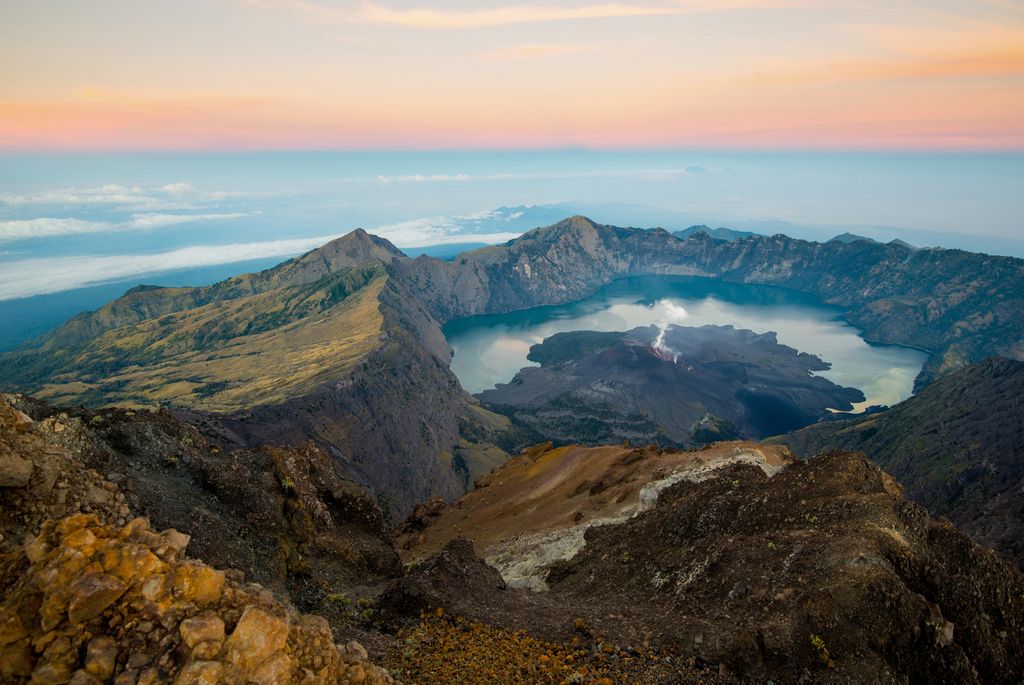
While Lombok misses some of the Balinese charms (think Hindu temples or stylish bamboo resorts), it makes up for it by being far less touristy, and its beaches are objectively better than those on Bali. I suggest bookending your trip with several days on a Lombok beach or island.
After your time is up on Lombok, it’s then back to Bali via the ferry before either departing back home or continuing onwards with your Southeast Asia itinerary.
The two-week Bali and Lombok itinerary is summarized below:
- Day 1 – 4: Bali (Seminyak, Canggu, or other)
- Day 5 – 7: Ubud
- Day 8 – 13: Lombok
- Day 14: Bali
Some links may be affiliate links, meaning I may earn commission from products or services I recommend. For more, see site policies.
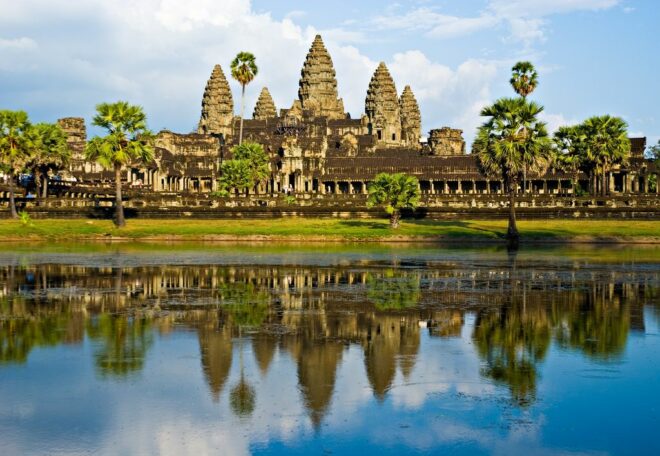
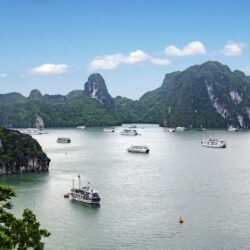
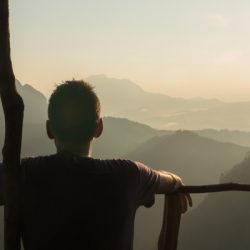




0 comments
Leave a comment
Your email address will not be published. Comments are manually moderated.